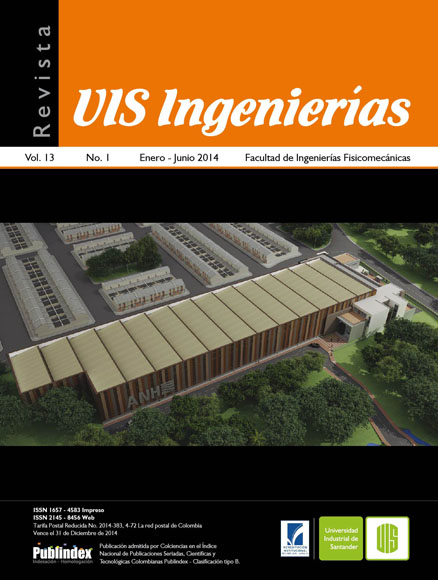Toxicity evaluation of an industrial waste stabilized/solidified with Portland cement
Published 2014-01-20
Keywords
- Solidification/Stabilization,
- spent catalytic cracking catalyst,
- portland cement
How to Cite
Abstract
This study evaluates the toxicity associated with Portland cement mortar blended with a residue of the petrochemical industry called catalytic cracking catalyst waste (FCC) using the technique of Solidifcation/Stabilization (S/E). The techniques of X-Ray Fluorescence, X-Ray diffraction and Infrared Spectroscopy permitted to evaluate the Chemical and mineralogical characteristics of the residue. Leaching of heavy metals on blended mortars with 20% w/w of FCC - determined by the tests Toxicity Characteristic Leaching Procedure (TCLP), Synthetic Precipitation Leaching Procedure (SPLP) and NEN 7341 - showed that the encapsulated waste is not a problem from of point of view of environmental issues. The research results of this study are in accord with the environmental standards. The use of FCC surges as a positive alternative for appropriated disposition of materials containing heavy metals.
Downloads
References
- BOZKURT, S.; MORENO, L.; NERETNIEKS, I. Long term processes in waste deposits. The Science of Total Environment. 2000, vol. 250, núm. 1-3, pp.101–121.
- CHAABAN, M.A. Hazardous waste source reduction in materials and processing technologies. Materials and Processing Technologies. 2001, vol. 119, núm. 1-3, pp.336–343.
- TALINLI, I.; YAMANTÜRK, R.; AYDIN, E.; BASAKCILARDAN-KABAKS, S. A rating system for determination of hazardous wastes. Journal of Hazardous Materials. 2005, vol. 126, núm. 1-3, pp. 23–30.
- GOLLMANN, M.; DA SILVA, M.; MASUERO, A.; DOS SANTO, J.H. Stabilization and solidification of Pb in cement matrices. Journal of Hazardous Materials. 2010, vol. 179, núm. 1-3, pp. 507–514.
- OLIVEIRA, D.M; CASTILHOS, J.A.; MIOTELLO, E. Avaliacáo da solidificacáo/estabilizacáo de borras oleosas utilizando caulinita e vermiculita como materials adsorbentes. XXII Congresso Brasileiro de Engenharia Sanitaria e Ambiental. Joinville Santa Catarina: 2003, pp. 1-18.
- LA GREGA, M.D.; BUCKINGHAM, P.L.; EVANS, J.C. Hazardous wastes management. 2a edición. New Jersey: McGraw- Hill, 2001. 1202 p.
- WILSON, D.; BALKAU, F.; THURGOOD, M. Solidificación y Estabilización. Manual de Formación en gestión de residuos peligrosos para países en vías de desarrollo. 2002. . [consulta: 31 -1- 2013].
- CONNER, J.R. Chemical Fixation and Solidification of Hazardous Wastes. New York: Van Nostrand Reinhold, 1990. 692 p. ISBN.0-442-20511-2
- PARIA, S.; YUET, P.K. Solidification/Stabilization of organics and inorganics contaminants using portland cement: a literature review. Environmental Reviews. 2006, vol. 14, pp. 217-255.
- AL–TAABA, A.; PROSE, S.; Treatment Study for in –Situ Stabilization/Solidification of soil contaminated with methylene Blue. Environmental Technology. 1996, vol. 17, núm. 2, pp.191-197. Instituto de investigaciones jurídicas. La industria petrolera ante la regulación jurídico-ecológica en México. 1ª edición. Universidad Nacional Autónoma de México, Ciudad universitaria, México, 1992, 251p. ISBN 968-36-2378-6.
- PACEWSKA, B.; BUKOWSK, M.; WILINSKA, I. Influence of some aggressive media on corrosion resistance of mortars with spend cracking catalyst. Journal of Thermal Analysis and Calorimetry. 2000, vol. 60, núm. 1, pp. 257-264.
- FURIMSKY, E. Review of spent refinery catalyst: environment, safety and utilization. Catalysis Today. 1996, vol. 30, núm. 4, pp. 223-293.
- RIHM, A.; ARELLANO, J.; SANCHA, A. M. Uso de test de lixiviación para caracterización de residuos del área minera y reflexiones sobre gestión de residuos peligrosos en América Latina. Congreso Interamericano de Ingeniería Sanitaria y Ambiental. 26 (AIDIS 98). Lima, 1-5 noviembre de 1998. CEPIS. -038116. pp.1-8.
- EPA. Test Method 1311. Toxicity Characteristic Leaching Procedure (TCLP). Code of Federal Regulations, 40 CFR part 261, appendix II, 1991, <http://www.epa.gov/osw/hazard/testmethods/sw846/ pdfs/1311.pdf>. [Consulta: 14-1- 2013].
- EPA. Test Method 1312. Synthetic Precipitation Leaching Procedure (SPLP), 1991. http://www.epa. gov/osw/hazard/testmethods/sw846/pdfs/1312.pdf>. [Consulta: 14-1- 2013].
- NNI. Netherlands Normalization Institute. NEN 7341. Leaching characteristics of solid (earthy and stony) building and waste materials. Leaching tests. Determination of the availability of inorganic components for leaching. Delft. 1996.
- JUNG-HSIU, W.; WU, W.; HSU, K. The effect of waste oil-cracking catalyst on the compressive strength of cement pastes and Mortars. Cement and Concrete Research. 2003, vol. 33, núm. 2, pp. 245-253.
- SU, N.; CHEN, Z.; FANG, H. Reuse of spent catalyst as fine aggregate in cement mortar. Cement and concrete composites. 2011, vol. 23, núm. 1, pp. 111-118.
- TSENG, Y.¸ HUANG, Ch.; HSU, K. The pozzolanic activity of a calcined waste FCC catalyst and its effect on the compressive strength of cementitious materials. Cement and Concrete Research. 2005, vol. 32, pp. 782- 787.
- FALABELLA, E. Papel das Zeolitas em Catalizadores de Craqueamiento; Programa Iberoamericano de Ciencia y Tecnología para el Desarrollo, CYTED. Catalizadores y Absorbentes. Tamices Moleculares; Primer Curso Iberoamericano. Subprograma V. Red Temática VA. 1993.
- LEE, W.K.W.; VAN DEVENTER, J.S.J. Use of infrared Spectroscopy to study Geopolimerization of heterogeneous Amorphous Aluminosilicates, Langmuir. 2003, vol. 19, pp. 8726-8734.
- PRUD’HOMME, E.; MICHAUD, P.; SOUSSEIN, E.; PEYRATOUT, C.; SMITH, A. ROSIGNOL, S. In situ inorganic foams prepared from various clays at low temperature. Applied Clay Science. 2011, vol. 51, pp. 15–22. Autor, 2012.
- CEPIS-OPS. Guía para la definición y clasificación de residuos peligrosos. . [Consulta:20-1-2013]
- TREVIÑO, C. New EPA rule will affect spent catalyst management. Oil & Gas Journal. 1998, vol.96, núm. 41, pp. 62–64.
- RAPAPORT, D. Are spent hydrocracking catalysts listed hazardous wastes?. Hydrocarbon Processing. 2000, pp. 49–53.
- RATTANASAK, U.; JATURAPITAKKUL, C.; SUDAPRASERT, T. Compressive strength and heavy metal leaching behaviour of mortars containing spent catalyst. Waste Management & Research. 2001, vol. 19, núm. 5, pp. 456-464.
- SUN, D.; LI, X.; BRUNGS, M.; TRIMM, D. Encapsulation of heavy metals on spent fluid catalytic cracking catalyst, Water Science and Technology. 1998, vol. 38, núm. 4, pp. 211-217.
- EPA. Estándares del Reglamento Nacional Primario de Agua Potable. EPA 815-F-00-007, 2000. . [Consulta 3 -2-2013].
- WHO. Guidelines for Drinking-water Quality Available, 4a edition, 2011, pp. 541.
- Diario oficial de las comunidades Europeas. Estándares Europeos de la calidad del agua potable. Directiva 98/83/EC sobre la calidad del agua destinada a consumo humano. 1998. <http://www.lenntech.es/aplicaciones/ potable/normas/estandares-europeos-calidad-aguapotable.htm#ixzz13C1IJX00>. [Consulta 3-2- 2013].

